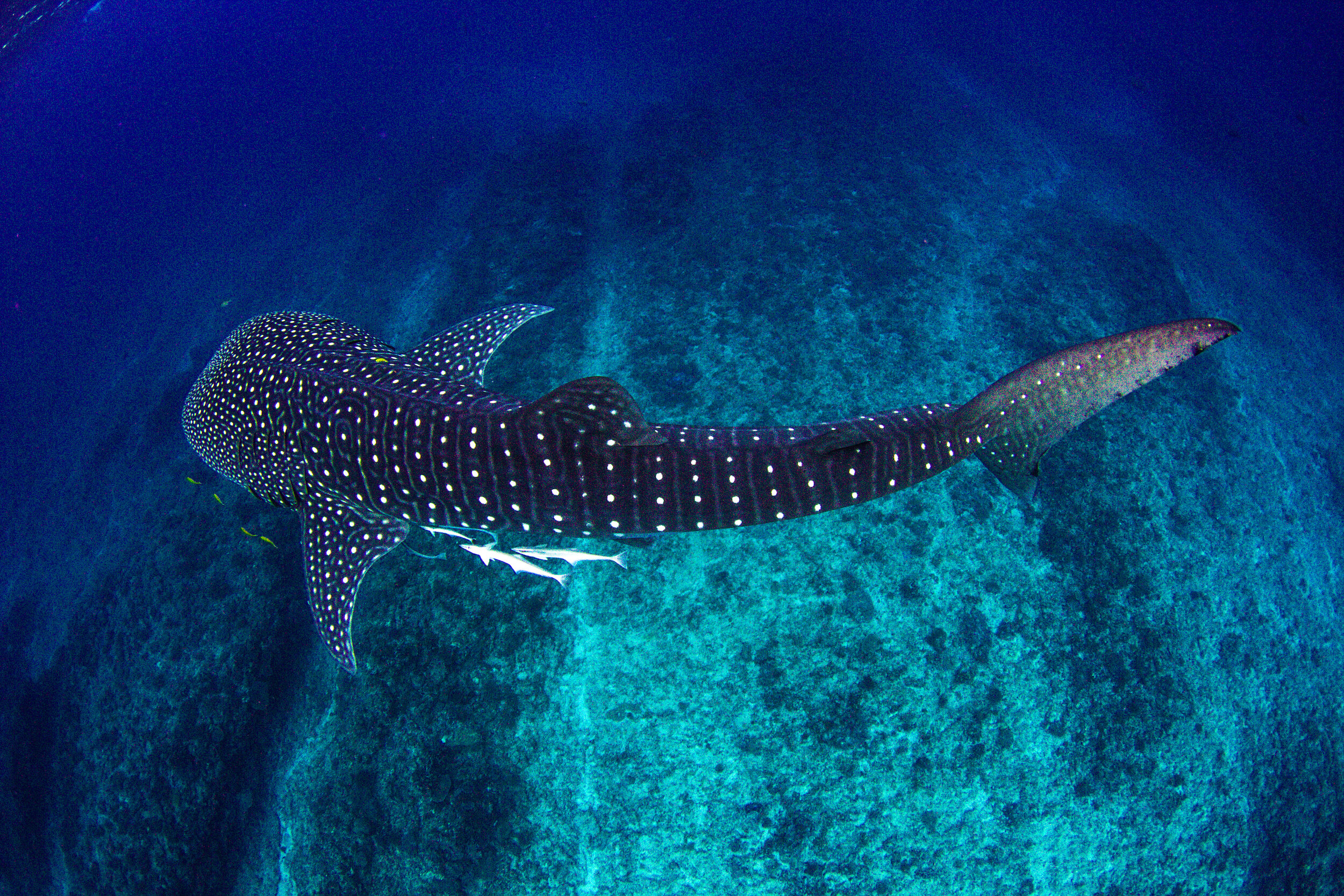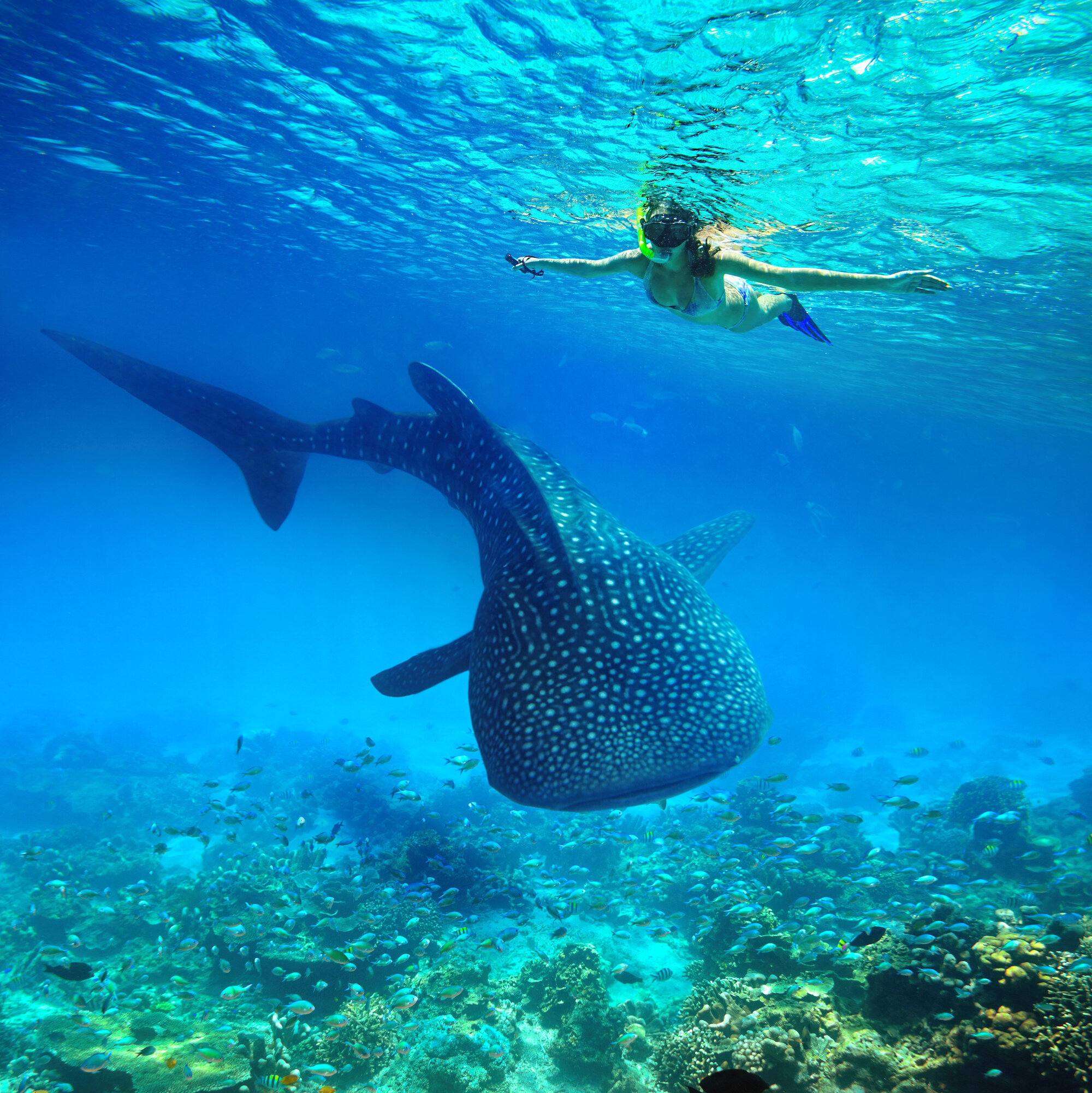Is it Ethical to Swim With Whale Sharks? Responsible Encounters
Whale shark tourism is on the rise. Since the start of the new millennium, travel has become far more accessible, adventurous subcultures have taken hold, and people from around the globe are venturing out to experience the world.
To swim with a whale shark has become a much-sought-after bucket-list activity. Giant, inquisitive, sociable and above-all gentle animals, whale sharks invite an incredible opportunity for a relaxed yet jaw-dropping interaction with one of the largest animals on the planet.
They’re also easy to encounter.
Whale sharks are migratory fish, and although they aren’t very populous (a few thousand left) their size and predictable nature makes them easy enough to find. They are also afforded lesser protection internationally than whales which means laws don’t stop you swimming with them, and because they are filter feeds, whale sharks are found closer to the surface and shores for longer periods of time as compared to whales.
This makes them much easier to interact with and swim with.
However, this does pose a very important question. Just because you want to swim with whale sharks, and can swim with them, should you? Xplore Our Planet looks at where desire and ethics meet, and how to get it right.
Ethical Whale Shark Encounters
The Dos of Swimming with Whale Sharks
Find a Reputable Guide Group
Whale sharks are beautiful, amazing animals, which means people devote their lives to studying them and protecting their welfare. Plenty of tour groups take their whale shark encounters very seriously, and go beyond just dumping you in the water to see the beasts.
These groups will offer education, have conservation credentials and work with nonprofits to secure a better future for their beloved whale sharks. Search for tour operators that promise good animal welfare ethics. It’s impossible to be certain that all their claims are genuine unless you really dig in and contact charities and movements they say they are a part of to double-check. Even so, it’s definitely a safer bet than going with tour groups without reputations, especially in areas with high-tourist numbers and a poor local economy with bad infrastructure.
Go in Small Groups
As with all wildlife encounters, balance is often the key to both great experiences and no-disruptive interactions. If you enter the water with large amounts of people, you create a great deal of movement and noise, which can be overwhelming for any animal. This is especially true for slow-moving and delicate animals like whale sharks.
Limiting the impact of encounters can often come down to the amount of people there. A whale shark is going to be far less disrupted in their natural behaviour by three people in the water as compared to 30. Make a conscious effort not to engage in activities that seem overwhelming by sheer numbers. The atmosphere should be that of what a whale shark is used to: totally relaxed and calm.
Observe Passive Encounters
You can enjoy an amazing encounter with almost any animal on the planet if you observe a very simple rule: be passive. Imagine you are a piece of kelp floating in the ocean dropped by a bird. You do not follow, you do not touch, you do not approach: you are just there.
When entering the water near whale sharks, maintain a good distance and don’t interact with the animal. Unless, of course, they actively engage with you - and even so, avoid contact when possible and ensure a safe distance if you can. If you observe the practice of passive encounters, you’ll allow the whale sharks you see to just go about their lives without inconvenience. The best way to view an animal is to do so without having any influence on their behaviour at all.
The Don’t of Swimming with Whale Sharks
Baiting Whale Sharks
The first thing to avoid is any activity that is baiting or feeding a whale shark for the purpose of encounters. In itself, this is not actually that bad. If supplies are sustained, wildlife can be supported by humans and live new ‘urban’ lifestyles. Just look at pigeons in London. The problem is the risk of infrastructure collapse. A lot of nations and areas that conduct these sorts of practices are poor and lack stable economic infrastructure. Take for example, Oslob in the Philippines. Here, whale shark encounters are famous and many people travel to swim with the giants that stay year-round because locals feed them.
On the surface, this seems like a decent arrangement. Whale sharks fed, economy booms, and the locals do in fact take good care of the whale sharks. Why wouldn’t they? Whale sharks bring in massive amounts of resources! But what if something were to happen, such as the Covid-19 Pandemic of 2020, and tourism dried up?
Feeding whale sharks becomes less significant when locals have got to feed themselves, and these whale sharks lose their primary food source. Whale sharks would now have to adapt to a different life, which could cause complications. The problem with supporting delicate ecosystems like this is that it leaves whale sharks vulnerable. Most animals are not as adaptable as people, and sudden changes can be devastating. It’s better to support more natural encounters than those that create artificial experiences, purely because it reduces risks of whale sharks becoming reliant on unstable food sources.
Forced Encounters
Whale sharks are often easy to be found, but that does not necessarily mean they want to be found. These animals can be curious and playful, they can also be impassive and uninterested, but sometimes they can be nervous and uncomfortable. If whale sharks don’t want to encounter people, they’ll move away from you.
At this point, it is important not to chase or follow them. Pushing whale sharks away further can disrupt behaviour and feeding. It’s important not to force an encounter upon a whale shark that does not want it. If a whale shark is showing signs of distress at your presence, leave the water and insist on finding other animals. Do not keep swimming after them or get back in the boat, chase after them and re-enter the water.
Another practice to avoid is figuring out the movement of a whale shark and getting ahead of them, making sure they have to swim at you if they want to carry on in the direction they are heading. Always enter the water parallel to a whale shark and allow them to stay nearby only if they want to. Never force them to be a part of your experience. Entering in this way means they know you are in the area, and that then gives them the chance to be part of your encounter or not.


